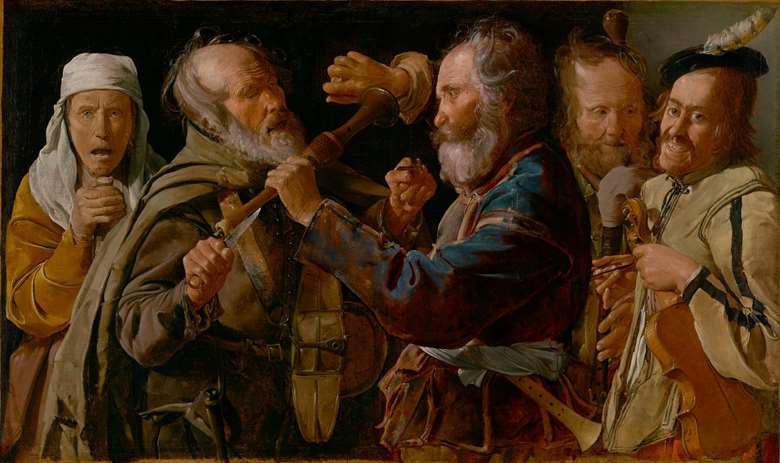Andrew Parrott and Hugh Keyte on building a carol compendium
Andrew Parrott and Hugh Keyte
Tuesday, December 12, 2023
Now ubiquitous during the festive season, the New Oxford Book of Carols brings together over 200 carols for Christmas concerts and celebrations. The volume’s creators Hugh Keyte and Andrew Parrott reflect on the process of creating a carol book which would retain its popularity over 25 years later, and look to the future with Parrott’s latest book, The Pursuit of Musick

Hugh Keyte: Like the young protagonists of Arthur Ransome’s masterly We Didn’t Mean To Go To Sea, Andrew and I began with modest intentions. The four Swallows set out to sail round Harwich harbour, but after a stormy, fog-bound night of terror found themselves in Holland. Equally sanguine, we set out to assemble a modest carol book – six months we assumed it would take – which we hoped might both reinvigorate carol singing and at least break even, but we ended up seven years later with a wrist-breaker of a volume for OUP. Where the Swallows encountered fog and tempest, we found ourselves faced with vast tracts of superb Christmas carols that had been ignored in existing anthologies. Among them were settings from what used to be called the English west-gallery tradition and from its vigorous US offshoots, ranging from the appealingly primitive to near-Handelian grandeur.


Much of that English repertory, notably from Dorset, Cornwall and Yorkshire, has been (and continues to be) ‘corrected’ by meddling (or copyright-seeking?) editors, and as for the standard repertory, many a favourite carol and Christmas hymn has suffered covert ‘improvement’. In vain did the author-composer of We Three Kings threaten to ‘prosecute… to the extent of the law’ anyone who replaced his setting with their own: not one of the innumerable rewrites can rival the inspired simplicity of his pitch-perfect original. An early hymnbook presented the Mendelssohn tune to Hark! the herald in equal notes throughout, and even the version that’s universally sung has been interfered with. As for Hans Gruber’s enchantingly Schubertian Stille Nacht, the Anglophone world sings it with an ineffably vulgar climactic phrase that was substituted by an Austrian family folk group that got hold of an early manuscript and hoiked their version around America. Myths cling to many a carol, too. Away in a manger began life as a recitation in an American-Lutheran Christmas pageant, but the USA remains convinced that Martin Luther wrote it in German to be sung to his infant progeny.
Our 201 carol entries (many with up to six variant and alternative settings) are now securely in the public domain, together with the million-and-a-half words of background information, so perhaps those doctored settings will eventually be ousted by what the composers themselves wrote. Not often are reviews as rewardingly fulsome as that of the Washington Post: ‘The New Oxford Book of Carols (NOBC) is the most comprehensive, scrupulously edited and informative book of its kind in the history of publishing’. And those seven years’ hard labour hasn’t deterred Andrew from producing a new and very different publication that may have yet broader impact on the musical world.
"We assumed it would take six months, but we ended up seven years later with a wrist-breaker of a volume"
Andrew Parrott: With NOBC safely in the hands of its publishers I finally felt able to pick up the threads of an earlier (though defunct) commission – for an illustrated, general-readership book on ‘Early Music’. Several more years passed, but now, in a new millennium and after an unusually protracted gestation period of some 40 years, The Pursuit of Musick has at last arrived, weighing in at a healthy 544 pages and (I have to believe) fulfilling every bit of its early promise.
On first acquaintance with this new book, readers will almost certainly be struck by the sheer abundance of images, many of them literally ‘worth a thousand words’. Yet, of at least equal significance is the book’s radical absence of an expected narrative text. In its place, is something arguably more vivid, valuable and (dare I say?) original – an array of succinct excerpts from the writings of those earlier poets, playwrights, novelists, singers, players, composers, listeners, spectators, travellers, by-standers, diarists, instrument makers, theologians, theorists, philosophers, archivists et al who experienced the music-making of their time at first hand. The aim of this format is not only to show how vastly rich a role music played in the lives of our not-so-distant ancestors, but also to allow their own multifarious voices to speak to us unfiltered across the centuries, with something of the same immediacy that so many of those pictures seem naturally to possess.
The Pursuit of Musick is emphatically not one to read from end to end, nor does it attempt to chart a chronological ‘history’ or to emulate traditional works of reference. Rather, it is designed for browsing and exploring, offering the chance to encounter unexpected topics or to follow particular interests, to make connections or simply savour the occasional morsel.
With the season of carol singing (and of book-giving) already upon us, you can find more information about the New Oxford Book of Carols here and The Pursuit of Musick here.



